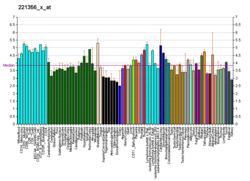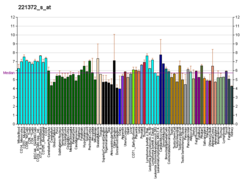
The P2X receptors, also ATP-gated P2X receptor cation channel family, is a protein family that consists of cation-permeable ligand-gated ion channels that open in response to the binding of extracellular adenosine 5'-triphosphate (ATP). They belong to a larger family of receptors known as the ENaC/P2X superfamily. ENaC and P2X receptors have similar 3-D structures and are homologous. P2X receptors are present in a diverse array of organisms including humans, mouse, rat, rabbit, chicken, zebrafish, bullfrog, fluke, and amoeba.

P2X purinoceptor 7 is a protein that in humans is encoded by the P2RX7 gene.

5-hydroxytryptamine receptor 3A is a protein that in humans is encoded by the HTR3A gene.

P2X purinoceptor 1, also ATP receptor, is a protein that in humans is encoded by the P2RX1 gene.

P2Y purinoceptor 2 is a protein that in humans is encoded by the P2RY2 gene.

P2Y purinoceptor 14 is a protein that in humans is encoded by the P2RY14 gene.

P2Y purinoceptor 4 is a protein that in humans is encoded by the P2RY4 gene.

Glutamate ionotropic receptor AMPA type subunit 2 is a protein that in humans is encoded by the GRIA2 gene and it is a subunit found in the AMPA receptors.

Gamma-aminobutyric acid receptor subunit rho-1 is a protein that in humans is encoded by the GABRR1 gene.
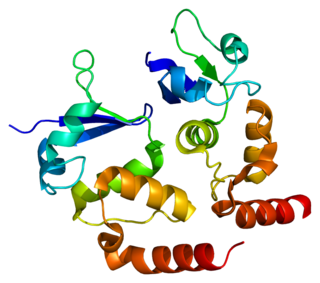
Potassium voltage-gated channel subfamily D member 3 also known as Kv4.3 is a protein that in humans is encoded by the KCND3 gene. It contributes to the cardiac transient outward potassium current (Ito1), the main contributing current to the repolarizing phase 1 of the cardiac action potential.

Cyclic nucleotide gated channel beta 3, also known as CNGB3, is a human gene encoding an ion channel protein.

P2X purinoceptor 4 is a protein that in humans is encoded by the P2RX4 gene. P2X purinoceptor 4 is a member of the P2X receptor family. P2X receptors are trimeric protein complexes that can be homomeric or heteromeric. These receptors are ligand-gated cation channels that open in response to ATP binding. Each receptor subtype, determined by the subunit composition, varies in its affinity to ATP and desensitization kinetics.

Potassium intermediate/small conductance calcium-activated channel, subfamily N, member 2, also known as KCNN2, is a protein which in humans is encoded by the KCNN2 gene. KCNN2 is an ion channel protein also known as KCa2.2.

P2X purinoceptor 5 is a protein in humans that is encoded by the P2RX5 gene.
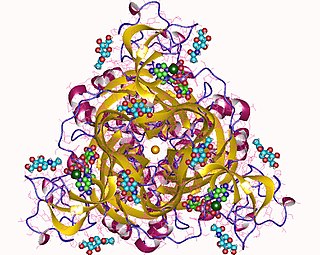
P2X purinoceptor 3 is a protein that in humans is encoded by the P2RX3 gene.
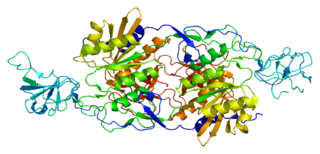
Glycine receptor subunit beta is a protein that in humans is encoded by the GLRB gene.

Glutamate receptor, ionotropic kainate 5 is a protein that in humans is encoded by the GRIK5 gene.

P2X purinoceptor 6 is a protein that in humans is encoded by the P2RX6 gene.

RIC-3 also known as resistance to inhibitors of cholinesterase 3 is a chaperone protein that in humans is encoded by the RIC3 gene. The RIC3 gene was first discovered in C. elegans. RIC-3 protein is conserved in most animals and influences the maturation of various ligand gated ion channels including the serotonin 5-HT3 receptor and nicotinic acetylcholine receptors, particularly the homomeric α7 nicotinic receptor. RIC-3 enhances currents generated by these receptors by expediting receptor transport to the cell surface and by increasing receptor number.

Cyclic nucleotide-gated cation channel alpha-4 is a protein that in humans is encoded by the CNGA4 gene.




